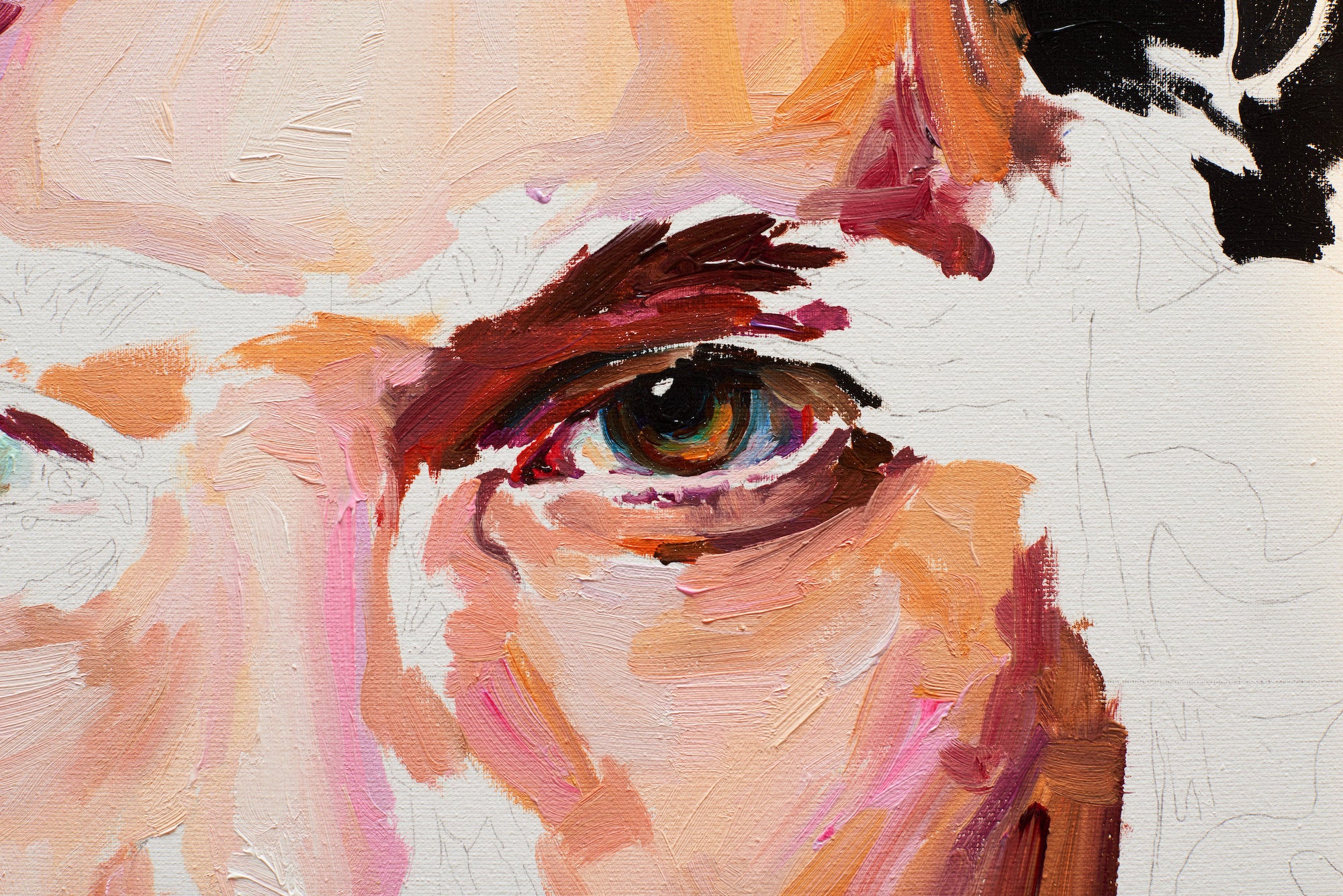Your Art Dictionary to Expand Your Creative Knowledge

It is critical for artists to understand fundamental artistic ideas and vocabulary. Finding your perfect work of art is straightforward once you know how to articulate it. In this blog post, we will go over some of the most important terminology in art, such as color theory, photorealism, and others.
Color Theory:
Color theory is a set of criteria used to determine which colors will blend nicely together. It takes into account the interplay of complementary colors as well as primary, secondary, and tertiary colors. Understanding color theory allows artists to create more coherent and visually beautiful works of art.
Photorealism:
Photorealism refers to artwork that is so realistically portrayed that it resembles a photograph. Photorealistic art is typically differentiated by exceptionally exact and detailed portrayals of the subject matter, in addition to strict attention to lighting and shadow.
'Oprah' is an example of Photorealism
Abstract Art:
Abstract art is defined as art that does not depict identifiable objects or scenes. Instead, it employs shape, color, and form to create a visual experience for the observer. Abstract art can be non-representational—that is, it does not depict any specific items or scenes—or partially representational—that is, it is based on genuine objects or scenes but is considerably stylized and simplified.
Realism:
Realism is a style of art in which the subject is shown as precisely as possible. Realistic art is defined by a great eye for detail and a truthful representation of the subject matter.

'Fill 'er Up' is an example of realism
Impressionism:
Impressionism is a form of art that focuses on capturing the sensation or atmosphere of a situation or object rather than precisely representing it. Impressionist art is distinguished by the use of light and shadow, as well as loose brushstrokes.
These are only a few of the many important concepts and ideas in art that every creator should understand. By mastering this vocabulary as well as the processes and styles employed in the art industry, artists can create more visually appealing and effective works of art.
Now, let's dig further into the various "key" compositional rules.
Composition:
Composition is the arrangement of objects inside a work of art. Color use and overall balance are examples of how elements are placed within a work of art.
Composition is an important aspect of art, and there are several standards that artists can follow to create more effective and visually beautiful work. In this blog post, we will go over some of the most important compositional criteria for art, such as the rule of thirds.
The Rule of Thirds:
The rule of thirds is a fundamental compositional approach in which two equally spaced horizontal and vertical lines divide an image into nine equal portions. The idea behind the rule of thirds is that arranging the subject of the image along these lines or at their intersection will result in a more harmonious and visually pleasing arrangement.
The Golden Ratio:
The "golden ratio" (about 1:1.61) is a mathematical ratio that is frequently used in art and design to create visually pleasing and harmonious designs. The golden ratio can be used to determine the placement of elements inside a picture, as well as the overall size and form of the image.
Leading Lines:
Leading lines in an image are lines that draw the viewer's attention to a specific subject or section of the image. Leading lines can be created using a variety of components, including object borders, backdrop lines, or the direction in which a human or animal is looking.
Symmetry:
Each component of the image should be evenly balanced on either side of the main axis, according to the compositional idea of symmetry. Symmetry is frequently used in art and design to portray a sense of harmony and balance, and it can give a picture a sense of order and stability.
These are just a few of the many compositional standards that artists can use to create more effective and visually appealing work. Understanding and using these notions allows artists to create compositions that are more dynamic, balanced, and fascinating.

Image: example of the "Rule of Thirds"
The art world, like any other industry, has its lexicon and definitions that might be difficult for outsiders to grasp. Here are some definitions for terms used frequently in the arts:
- Aesthetics: Aesthetics refers to the admiration of beauty, particularly in art. The term "aesthetic" refers to the concepts or principles that guide evaluating a work of art. It is interested in beauty and taste and the creation and valuation of art.
- Form: Form is a three-dimensional element of art that comprises shape, scale, and volume. The outer aspect of a work of art is described by its form, which includes its size, shape, color, and texture. Form can also refer to how a work of art's different aesthetic components, such as line, shape, color, and texture, interact.
- Genre: A genre is a specific type of art, such as a still life, landscape, or portrait. A genre is a category of art that is distinguished by its subject matter or style. A few examples of art are portrait, landscape, still life, and abstract.
- Medium: The material or technique used to create an artwork, such as charcoal, oil paint, or clay, is called the medium. "Medium" refers to the materials or tools that are utilized in the creation of an artwork. Typical art media include paint, pencil, clay, and digital media.
- Movement: An artistic movement, like Impressionism or Abstract Expressionism, that unites a group of artists. Several well-known art movements include Impressionism, Surrealism, and Expressionism.
- Perspective: In order to give the impression of depth and distance in an artwork, perspective employs vanishing points and converging lines. The technique of creating the illusion of three-dimensional space on a two-dimensional surface is called "perspective". It uses techniques like vanishing points and foreshortening to imply depth and distance.
- Style: An artist's unique process for creating their work, encompassing the mediums, themes, and techniques they employ. Style is the unique method an artist employs to create their work, encompassing the subject matter, composition, and techniques they choose. An artist's artistic approach is influenced by their training, cultural background, and life experiences.
- Symbolism: Using pictures or other figurative elements to convey a deeper message in a work of art is referred to as symbolism. Symbolism is the use of symbols to convey ideas or characteristics. Symbols can express deeper meaning or give multiple levels of interpretation in works of art. Symbols can be abstract or concrete, such as the color blue denoting sorrow or an image of a flag representing allegiance.
All things considered, these ideas are essential for comprehending and evaluating works of art because they aid in framing and interpreting the meaning and value of a piece. One can learn more about the artist's intentions as well as the social, political, and cultural context in which a work of art was created by understanding the aesthetic, form, genre, medium, movement, perspective, style, and symbolism of the piece.
Studying these and other art terms can help you appreciate and understand the many components and steps that go into producing a work of art. If you're an art aficionado or an artist yourself, understanding these terms will help you gain a deeper understanding of the art world.


